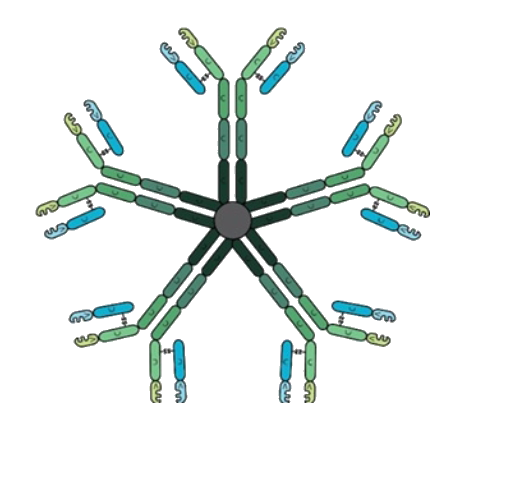Identify the correct option for the order of specific charge of the
given particles.
n<α<p<e (considering sign of charged particle)
n<α<p<e (not considering sign of charged particle)
e<n<p<α (considering sign of charged particle)
n<e<α<p (considering sign of chatged particle)
The correct Answer is:B
To solve the question regarding the order of specific charge of the given particles (neutron, alpha particle, proton, and electron), we will follow these steps:
Step 1: Understand Specific Charge
Specific charge is defined as the ratio of the charge (E) of a particle to its mass (m). Mathematically, it is expressed as:
Specific Charge=Em
Step 2: Analyze Each Particle
1. Neutron:
- Charge (E) = 0 (neutron is neutral)
- Mass (m) = approximately 1.675×10−24g
- Specific Charge = 01.675×10−24=0
2. Alpha Particle:
- Charge (E) = +2e (where e is the elementary charge)
- Mass (m) = approximately 4×1.675×10−24g=6.7×10−24g
- Specific Charge = 2e6.7×10−24
3. Proton:
- Charge (E) = +e
- Mass (m) = approximately 1.675×10−24g
- Specific Charge = e1.675×10−24
4. Electron:
- Charge (E) = -e
- Mass (m) = approximately 9.1×10−31g
- Specific Charge = −e9.1×10−31
Step 3: Calculate the Specific Charge Values
- For the neutron: Specific Charge = 0
- For the alpha particle:
Specific Charge=2e6.7×10−24≈2.99×1023C/kg
- For the proton:
Specific Charge=e1.675×10−24≈5.96×1024C/kg
- For the electron:
Specific Charge=−e9.1×10−31≈−1.76×1011C/kg
Step 4: Order the Specific Charges
- Neutron: 0
- Alpha Particle: ≈2.99×1023C/kg
- Proton: ≈5.96×1024C/kg
- Electron: ≈−1.76×1011C/kg
Step 5: Determine the Order
When considering the absolute values (ignoring the sign):
1. Electron: ≈1.76×1011
2. Alpha Particle: ≈2.99×1023
3. Proton: ≈5.96×1024
4. Neutron: 0
Thus, the order from least to greatest specific charge (ignoring the sign) is:
- Neutron (0)
- Electron (negative value but higher in absolute terms)
- Alpha Particle
- Proton
Final Answer
The correct order of specific charge of the particles is:
- Neutron < Electron < Alpha Particle < Proton
Specific charge is defined as the ratio of the charge (E) of a particle to its mass (m). Mathematically, it is expressed as:
Specific Charge=Em
1. Neutron:
- Charge (E) = 0 (neutron is neutral)
- Mass (m) = approximately 1.675×10−24g
- Specific Charge = 01.675×10−24=0
- Charge (E) = +2e (where e is the elementary charge)
- Mass (m) = approximately 4×1.675×10−24g=6.7×10−24g
- Specific Charge = 2e6.7×10−24
- Charge (E) = +e
- Mass (m) = approximately 1.675×10−24g
- Specific Charge = e1.675×10−24
- Charge (E) = -e
- Mass (m) = approximately 9.1×10−31g
- Specific Charge = −e9.1×10−31
- For the neutron: Specific Charge = 0
- For the alpha particle:
Specific Charge=2e6.7×10−24≈2.99×1023C/kg
- For the proton:
Specific Charge=e1.675×10−24≈5.96×1024C/kg
- For the electron:
Specific Charge=−e9.1×10−31≈−1.76×1011C/kg
- Neutron: 0
- Alpha Particle: ≈2.99×1023C/kg
- Proton: ≈5.96×1024C/kg
- Electron: ≈−1.76×1011C/kg
When considering the absolute values (ignoring the sign):
1. Electron: ≈1.76×1011
2. Alpha Particle: ≈2.99×1023
3. Proton: ≈5.96×1024
4. Neutron: 0
- Neutron (0)
- Electron (negative value but higher in absolute terms)
- Alpha Particle
- Proton
The correct order of specific charge of the particles is:
- Neutron < Electron < Alpha Particle < Proton
Similar Questions
Knowledge Check
The ratio of specific charge of a proton and an α-particle is
A2:1B1:2C1:4D1:1
Identify correct option

View SolutionIdentify the correct option for the systematic position of mango.
View SolutionThe ratio of specific charge of a proton and an alpha-particle is :
View SolutionIdentify the correct option regarding the structure given below .

View Solution identify correct stability order
identify correct stability order
View SolutionIdentify the correct option in column I, II and III

View SolutionIdentify the correct order of thermal stabilities.
View Solution
